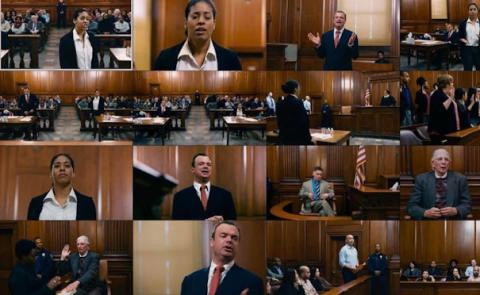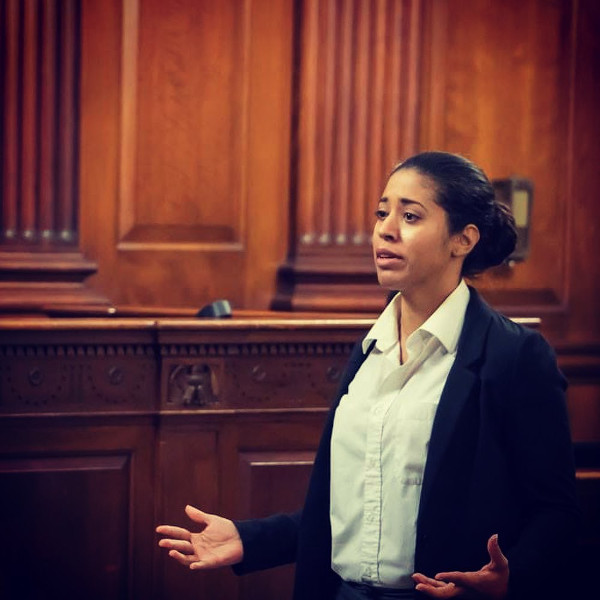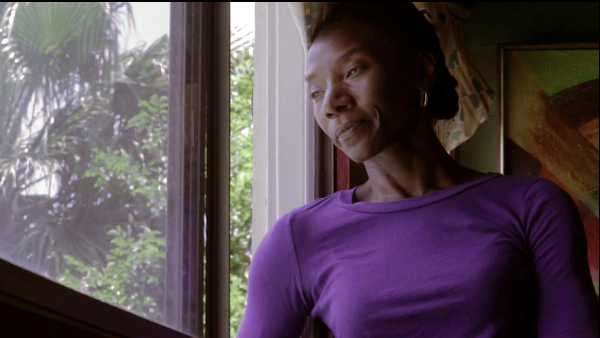African Diaspora Filmmakers Break the Cinematic Glass Ceiling

Did you hear it? ADIFF (African Diaspora International Film Festival) Women’s History Month Film Series in March 2021 proved that women filmmakers of color not only can break the cinematic industry’s glass ceiling, but the crash can resound around the world. France, Tunisia, Bangladesh, Senegal, and more are part of the program. For this reviewer, the USA stands strong in both the documentary and fiction categories.
Betrayal of a Nation
Some worthy cases never come to trial. It’s high time this one did. In Betrayal of a Nation, director Brandi Webb puts the United States on trial for crimes against the Black race stretching back 400 years and then some. True, you won’t find a case of this magnitude in your local court records, but Webb’s “People vs. The U.S.A.” goes a long way to setting the record straight.
It’s an exhaustive undertaking. Although the director admits her helplessness as a woman of African-American ancestry—faced with an onslaught of back-to-back murders in the Black community, she decides to frame her list of indictments in the form of a trial. Since this is, after all, a documentary, the courthouse remains little more than a superficial construct to allow Webb to lay out her case. And what a case it is!
Thankfully, Webb employs an arresting array of archival footage, rare interviews, graphs, and an amazingly well-researched historical record of Black plight from the first exit off a slave ship to the current examples of police brutality in the deaths of Brianna Taylor and George Floyd in 2020.
When the film does return intermittently to the courthouse, we are greeted with a no-holds-barred delivery of indictments by Jenisse Pierlussi in the role of prosecutor. Webb can almost be forgiven for a monotone narration with such a chilling rollcall of crimes on trial. The white defense attorney, as played by Jason Hewitt, is a patronizing figure. He blathers about the “land of the free, and the home of the brave” but it’s a pallid defense in the light of the atrocities at hand.
It’s worth mentioning some of the historical accounts given, which comprise the heartbeat of the film. There was no doubt that early oppression from 1501 to 1865 was by design, with slaves reduced to generational property and 4-year-old children working alongside their elders in the fields. The figures are staggering with slave labor worth 3.5 billion, more than railroad and manufacturing profits combined. While the 13th Amendment abolished slavery, the Reconstruction period was quick to implement Black codes, with felonies freely administered for chicken stealing. It takes little imagination to picture the desperation behind such thefts.
What viewers may have forgotten in our shared history of oppression, Webb fills in the blanks. Fourteen-year-old Emmet Till put a tortured face on lynching and the KKK with their nightly raids ensuring bad dreams for the most insular of the populace.

One of the most illustrative stories from the early 20th century details the Greenwood community of Tulsa, Oklahoma. Home to what was referred to as Black Wall Street, this 35-40 block became a petroleum payload for the Black residents benefiting from the oil surge. But as we are reminded, “Blacks can never do better than you.” Revenge was cataclysmic—air drops of explosives with no fire trucks to fight the attack. Over 10,000 residents were left homeless.
The Tuskegee Experiment of 1932, by the U.S. Department of Health, involved 600 African-American men recruited from Macon County, Alabama. At that time, there was no known treatment for syphilis, a contagious venereal disease. Primarily sharecroppers, many had never visited a doctor. Duped into believing they had “bad blood,” they were promised free healthcare for participating. Left untreated as part of the trial, many went blind, died, or went insane.
Webb’s indictments shower the viewer like toxic candy from a Mexican pinata. J. Edgar Hoover’s memo advising the removal of Rev. Martin Luther King Jr. as a societal threat resulted in an assassination almost as contested as JFK’s. There are more casualties: Malcolm X, Fred Hampton, the Black Panthers and others whose names rest unquietly in the twilight of history.
Mass incarceration according to the 2010 census revealed 2.3 million locked behind bars, with the Black percentage five times higher than whites. If we are to believe the court’s prosecutor, a whopping 70 percent have not committed a crime but simply cannot afford bail. Police brutality has become a rallying cry for the Black Lives Matter movement and according to Webb, 99 percent of such cases escape conviction, with an officer who can simply say he “was afraid.”
The most poignant tragedy covered was that of 13-year-old Nicholas Hayward, shot dead in a park while playing with a plastic gun. There is no greater grief perhaps than the loss of a child and the interviews with Nicholas Heyward Sr. and Samaria Rice should move any viewer to take note.
Webb begins and ends her film with the lighting of candles. She tells us it is the combination of light and water that gives eternal emotional freedom. We can only hope that the making of this significant and moving documentary will reach the greater audience it deserves.

Stand Down Soldier
For starters, it was both revelatory and refreshing to see that a film about a soldier’s return home from active duty in Iraq is focused on a woman.
Stacy, as portrayed by Jeryl Prescott Sales, is a lean, mean Black combat veteran who makes it clear that she’s not at all ready to make nice with her family. She misses her buddies but she can’t call up one in particular on the phone. As she tells her counselor, she can only feel selfish. Why? Because when she put the pieces of him in a plastic bag, she was only thankful it wasn’t her.
What we discover soon enough is that the Stacy that has returned from a long deployment is selfish, but not because she values her own survival. The woman is severely traumatized. Nightmares of her rape at the hands of another solider prevents any real intimacy with her husband Jesse (Kevin Jackson). An opioid addiction is fueled by her friend Michael (Eddie Rouse), a wiry hospital nurse who is only too happy to take her money to satisfy the habit. One of their encounters leads to a hit-and-run incident, when Michael runs down a young boy.
At that point, the story turns into a tangle of subplots. Stacy discovers that the young boy, now hospitalized, is none other than her grandson. Her own son, Jesse Jr. (T’Shaun Barrett) has discovered upon his own return from deployment that his wife Terri (Shanti Lowry) did not abort a child she thought he wouldn’t want. To complicate things further, Terri’s best friend Billi (Dianna Kilpatrick) is an old flame of Jesse’s. There are more twists, with the life of the stricken child hanging in the balance.
All of the assembled cast turns in believable performances, but I can’t help wishing that Jeryl Prescott Sales, a triple-threat writer, producer, director and actor, had kept a tighter focus on Stacy’s story and her eventual recovery. It’s a tale that many women in the military, returning home with hopes for a normal life, find essential to share.

Author Bio:
Sandra Bertrand is Highbrow Magazine’s chief art critic.
For Highbrow Magazine































































































































































































































































































































